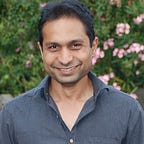Infinity in Indian Mathematics and other achievements of Jain Mathematicians
When we think of Jainism we mostly think about their religious teachings, which indeed are very profound. However did you know that Jainism also has a rich tradition in Mathematics? In this article let’s have a look at the mathematics of Jains
If you have read my previous articles on Indian Mathematics then by now, it must be very clear to you that most of the mathematics developed in the old times was developed due to religious reasons. In previous articles we have talked about how Vedic mathematics was developed to build sacred fire altars and the concept of zero came into existence in India to represent astronomical numbers present in the religious texts of India.
Just as in Hinduism, Jain texts also put huge emphasis on large numbers. Consider this statement from Umasvati’s Tattawarthadhigama Sutra Bhasya
1. A soul consists of innumerate soul units
2. Space consists of infinite space units
3. A small piece of matter may contain infinite, finite or innumerate number of matter units (atoms)
As you can see Jain thinkers were mesmerized with the concept of large numbers and therefore many conjecture that probably it were the Jains who might have first come up with the decimal system. Now although we do see the first concrete mention of the decimal zero in the Jain text of Lokavibhaga, there is no concrete proof that the Jains developed decimal number system. Decimal system seems to have been in use during Harappan times, as we know from their weight ratios. Vedas also enumerate numbers in the decimal order.
One thing where Jains show distinction is in their idea of infinity. Since Jains thought of this universe to be vast, they were familiar with the concept of infinity and recognized five different types of infinity in addition to infinity as an abstract concept of Anant prevalent in all major Indian religions. The Jains had a concept of infinite in one direction, infinite in two directions, infinite in area, infinite everywhere in space and infinite everywhere in space and at all times. This is a very profound knowledge of infinity that Jains had. In the Europe this concept that all infinities are not the same only came into existence in the late 19the century.
Not only were Indian mathematicians well versed with the concept of infinite as discussed here, they were also well versed with the concept of infinitesimal as we will talk about later in our later video on Bhaskara II. As all of you who have studied mathematics at the high school level will know, it is this concept of infinitesimal on which the whole calculus is built.
Jain mathematicians were also interested in sequences and progressions. Jain cosmology pictures the world to be a set of concentric circles of land and ocean with each ring being twice in diameter of the previous one. The central part of the cosmos was the island of Jambudweepa, where humans live. Now of course this cosmology is inaccurate, however it provides some interesting problems on series and progressions and Jain mathematicians figured out various rules for solving these problems. Text to refer for this work is Trilokprajnapti by Yativrsabha.
Jain philosophy is interested in the number of souls in this world and many texts talk about special formula for calculating it. Although not of much practical use they do indicate that Jain mathematicians understood power indices very well. As an example the text Anuyoga Dwara Sutra mentions the first square root of a number multiplied by the second square root is equal to the cube of the second square root. Representing it mathematically
A¹/2 * A¹/4 = (A^(1/4))³
By the 8 thcentury AD we have evidence that Jain mathematicians had developed the early ideas of logarithms of the base of 2, 3 and 5 called ardhcheda, trakacheda and chaturcheda. For details refer to Dhaval commentary by Virasena.
Jains had also developed solutions for permutations and combinations by 300BCE as evident from the text Bhagbati Sutra. In fact there is evidence that the interest in permutations and combinations was there all across India, as is evident from the work of Susruta on Medicine and Pingala’s on poetry. Lastly coming to geometry Umasvati’s Tattawarthadhigama Sutra Bhasya (200AD) provides us a glimpse. In this text mathematical formulae are provided for calculating the Area, Circumference, Chord and arc segment of a circle.
So as you can see our ancient Jain mathematicians were quite sophisticated in their knowledge of mathematics for their time. They had a deep understanding of infinity, progressions, power indices and permutations and combinations.
Originally published at https://stoicsadhu.com on October 11, 2019.
